What to Do When Therapy Isn't Working for Depression
Psychotherapy helps many people with depression — but it isn’t effective for everyone. For example, a large clinical trial found that nearly 60% of participants still met the criteria for major...

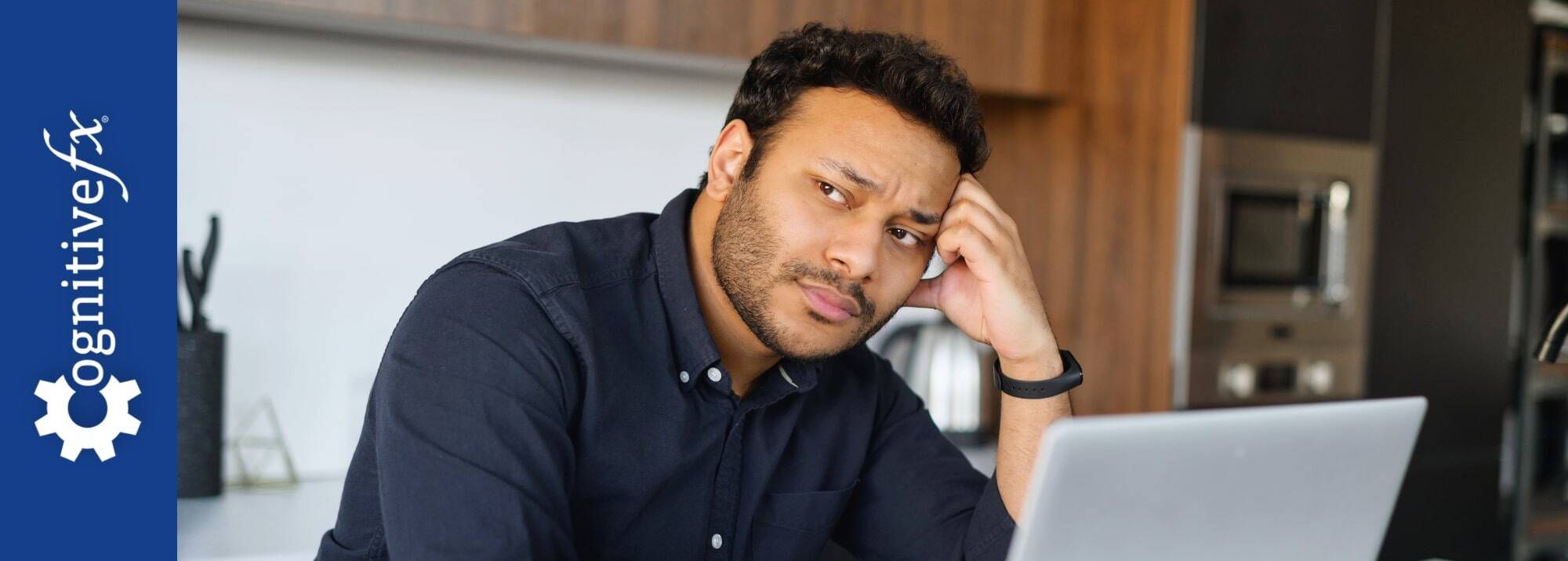
Anxious depression, clinically referred to as mixed anxiety depressive disorder (MADD), is a challenging condition to treat. Standard approaches — such as antidepressant medication and psychotherapy — often take weeks or even months to show results. Even more concerning, antidepressant medications are effective for only about one-third of patients, leaving many struggling to find relief.
Fortunately, advanced methods of transcranial magnetic stimulation (TMS) therapy are emerging as faster, more effective treatment options, especially for those who haven’t benefited from traditional treatment options.
This article covers the essential information patients with anxious depression need to know when seeking treatment, including:
Major depressive disorder (MDD) is diagnosed when a person meets several key symptoms affecting mood, behavior, and physical health, such as changes in sleep or appetite. Because not all patients share the same symptoms, depression has distinct subtypes that can vary significantly.
Anxious depression is one such subtype. This condition occurs when specific symptoms of anxiety occur simultaneously with symptoms of depression. Patients with anxious depression often experience a greater range of symptoms and face greater challenges in achieving symptom relief than those with non-anxious depression. Recognizing these challenges, the Diagnostic and Statistical Manual of Mental Disorders, Fifth Edition (DSM-5), introduced "anxious distress" as a specifier within the MDD diagnosis.
Anxious depression is considered a distinct diagnosis from the anxiety disorders, including generalized anxiety disorder, panic disorder, specific phobias, and separation anxiety disorder.
Patients with anxious depression may experience several symptoms of depression, such as:
In addition, they often exhibit anxiety-related symptoms, including:
For instance, while sleep problems are common across depression subtypes, patients with anxious depression typically experience insomnia and agitation, whereas those with non-anxious depression can be more prone to excessive sleep. Similarly, while sadness and anhedonia are common in depression, individuals with anxious depression often feel low due to constant rumination, worry, and pessimism about the future, sometimes causing them to lose interest in daily activities and withdraw from social interactions.
One key factor in understanding why some patients develop anxious depression is their level of emotional reactivity. Reactivity refers to how strongly someone reacts to stress and how long it takes them to return to baseline following a stressor.
Patients with high reactivity tend to evoke emotions more easily, feel emotions more intensely, stay stressed longer, and are more prone to anxiety. In contrast, individuals with low reactivity have more subdued emotional responses and are less likely to show outward signs of distress.
This distinction can influence how patients process life events. Take, for example, the experience of losing a job. A low-reactivity individual might feel hopeless and dwell on self-critical thoughts, such as believing they were never competent or doubting their ability to build a successful career. This mindset could lead to feelings of despair and depression.
On the other hand, a highly reactive person might spiral into anxious thoughts about the future. They could worry about unpaid bills, financial instability, or their ability to provide for their family, which amplifies feelings of stress and anxiety.
While reactivity plays a significant role, it's important to note that other factors, such as genetics, past trauma, and environmental stressors, also contribute to whether someone develops anxious or non-anxious depression. Understanding these nuances can help in tailoring treatment approaches to individual needs.
Treatments for anxious depression typically include pharmacotherapy, psychotherapy, or a combination of both.
Antidepressant medications are the most common treatment for anxious depression, but treating anxious depression can be more challenging than treating non-anxious depression. This is largely due to the broader range of symptoms associated with anxious depression, as well as a higher likelihood of suicidal ideation.
Research highlights these challenges. For example, in the STAR*D trial — the largest study of antidepressant medications — over half of the participants had anxious depression. This group showed lower remission rates, took longer to respond to treatment, and experienced more severe side effects compared to patients without anxiety symptoms.
Despite these hurdles, antidepressant medications remain a cornerstone of treatment used by many psychiatry specialists and other health care professionals. Common medications categories include selective serotonin reuptake inhibitors (SSRIs), serotonin-norepinephrine reuptake inhibitors (SNRIs), benzodiazepines, and tricyclic antidepressants (TCAs).
However, not all antidepressant medications within these classes are equally effective for anxiety symptoms. Examples of antidepressant medications that are commonly used include sertraline (Zoloft), paroxetine (Brisdelle), and duloxetine (Cymbalta).
To maximize benefits, providers must select medications that address both depression and anxiety without exacerbating other problems. Broad-acting medications that target multiple pathways in the brain (serotonin, noradrenaline, dopamine) may be more effective than those that only target serotonin. However, these broader effects can also increase the risk of unpleasant side effects, requiring careful dose adjustments tailored to each patient.
For instance, while increased energy is often a desired outcome of antidepressant therapy, certain medications can inadvertently cause heightened restlessness or even panic attacks in patients with anxiety. Drugs like bupropion (Wellbutrin), fluoxetine (Prozac), and venlafaxine (Effexor) are particularly prone to these effects and must be prescribed cautiously for individuals with a history of panic attacks.
A major challenge in treating anxious depression is the unpredictability of individual responses to medication. Even when a medication seems theoretically suited to a patient, there’s no guarantee it will improve symptoms and be an effective treatment.
Although genetic testing may offer insights into how a patient might metabolize specific medications (e.g. identifying potential side effects), it cannot reliably predict symptom improvement nor reactions to a given medication. This underscores the need for ongoing research into personalized treatment strategies.
Psychotherapy, or talk therapy, is also a common form of treatment for patients with anxious depression. There are multiple types of psychotherapy and only a subset have been demonstrated to be effective.
Decades of research studies show evidence of CBT as the most effective psychotherapy for treating depression and anxiety. CBT helps patients identify and evaluate problematic thoughts, feelings, and behaviors and guides them in developing more adaptive thought and behavioral patterns.
CBT also aids patients to re-engage in activities they previously enjoyed. This helps improve mood, emotional regulation, and overall functioning.
Some of the symptoms that CBT can improve include:
Rumination: Repetitive, negative thinking that often fuels anxiety and depression. CBT helps patients break this cycle and reduce rumination, thereby reducing anxiety symptoms
Insomnia: CBT addresses problematic behavioral and thought patterns that interfere with sleep, and reduces the emotional distress contributing to poor sleep.
Reactivity: Patients with this personality trait often experience heightened stress and negative emotions, perceiving the world as threatening. Studies show CBT can help reduce these tendencies, improving emotional resilience.
One of CBT’s strengths is its adaptability. For it to be effective, session content is tailored to the unique symptoms and mental health conditions of each patient.
For instance, both depressed and anxious depressive patients may experience negative thoughts, but they manifest differently. A depressed patient might think, “I’m a failure,” leading to sadness and withdrawal. An anxious depressive patient, on the other hand, might worry, “What if I lose my job?” or “What if I can’t pay my bills?” These thoughts often lead to agitation and heightened anxiety.
Therapists adjust their approach based on these differences. For an agitated, anxious patient, calming exercises to regulate the nervous system may be essential. Conversely, a non-agitated depressed patient may need strategies to increase engagement and energy levels.
The key takeaway is that CBT is not a one-size-fits-all solution. Tailoring therapy to individual needs is critical for achieving positive outcomes.
In addition to cognitive behavioral therapy (CBT), other psychotherapies, such as behavioral therapy (BT) and interpersonal therapy (IPT), can help patients manage anxious depression.
Behavioral therapy, also known as behavioral activation, is considered a simplified subset of cognitive behavioral therapy (CBT). Unlike CBT, which addresses both thoughts and behaviors, BT focuses solely on the behavioral aspect, leaving the cognitive component out.
The primary goal of BT is to break the cycle of inactivity and avoidance that often accompanies depression and anxiety. It emphasizes helping patients re-engage in meaningful and rewarding activities, which can provide significant short-term benefits. For instance, patients may set small, achievable goals — like taking a short walk or reconnecting with a friend — which can boost mood, motivation, and energy. For anxiety, BT may focus on gradual exposure to anxiety-provoking, avoided activities.
BT’s streamlined approach can be helpful for patients who find cognitive strategies overwhelming at first. However, its focus on behaviors alone means it may lack the long-term benefits associated with addressing cognitive patterns. Research suggests that the cognitive components of CBT, such as challenging negative thought patterns and improving cognitive processing, are critical for sustained improvement and lasting change.
In practice, BT may serve as a valuable starting point for therapy or as a complementary approach within a broader treatment plan. While it may not replace the long-term benefits of full CBT, its ability to quickly improve mood and increase activity levels makes it an effective tool for many patients.
Interpersonal therapy focuses on improving a patient’s relationships and social interactions. It helps patients recognize how life events, such as grief or arguments with family members and loved ones, can affect their mood and emotional well-being and coaches them on how to communicate emotions, express needs, and adapt to changes in social roles.
For patients with anxious depression, IPT can also address common anxiety-related issues, such as difficulties in expressing anger, setting boundaries, or confronting others.
Although the evidence for IPT in treating anxiety symptoms is not as strong as for CBT, it can be particularly helpful for individuals whose anxiety stems from relationship conflicts or social stress. For example, a patient who feels overwhelmed by unspoken expectations in their marriage might use IPT to develop clearer communication strategies, reducing tension and enhancing emotional connection.
One of the primary limitations of psychotherapy is the time it takes to show results, although it can be more fast-acting than medication. For example, cognitive behavioral therapy (CBT) typically requires 8–16 weeks of weekly sessions before many patients experience recovery. While this process is crucial for achieving long-term benefits, the delayed relief can be challenging for patients seeking faster solutions.
This is where alternatives like transcranial magnetic stimulation (TMS) therapy can play a valuable role. Accelerated TMS protocols in particular can offer quicker symptom relief for some patients by directly targeting brain activity associated with mood regulation. When combined with CBT, TMS can provide immediate support, while the patient continues working toward lasting improvements.
As we’ve laid out in this article, standard treatment options for anxious depression have key limitations. Namely:
Antidepressant medications fail to work for about two-thirds of patients and are often accompanied by unpleasant side effects.
Both medication and psychotherapy interventions may take weeks or months to produce remission of symptoms.
Accelerated fMRI-guided TMS, a new method of transcranial magnetic stimulation, improves upon both limitations.
Accelerated fMRI TMS, which follows the “SAINT™ protocol,” is a new TMS method for treating depression that was FDA approved in 2022.
Several characteristics separate this protocol from the original form of TMS (repetitive TMS or rTMS):
Use of Intermittent Theta-Burst Stimulation (iTBS): Accelerated fMRI TMS utilizes intermittent theta burst stimulation (iTBS), a form of accelerated TMS that delivers treatment in shorter sessions. This contrasts with the original form of TMS (rTMS), which requires 37-minute daily sessions over a longer period (4–6 weeks).
Precise targeting with fMRI and neuronavigation: One of the most impactful aspects of accelerated fMRI TMS—pioneered by the team at Stanford who developed the revolutionary SAINT™ protocol—is using functional MRI (fMRI) and neuronavigation for precision targeting. fMRI is used to locate the target area of the brain (the dorsolateral prefrontal cortex, or DLPFC) while neuronavigation ensures the magnetic coil is placed accurately over this spot for every treatment session. This precise targeting is crucial for effectiveness, as even a slight misplacement of the coil can diminish results. In contrast, other TMS methods, such as rTMS and standard iTBS, often rely on less precise methods for coil placement, such as clinicians taking manual measurements of the patient’s scalp.
Condensed treatment schedule: Accelerated fMRI TMS is administered over a condensed period of just one week, with patients receiving 10 short sessions per day for 5 days, totaling 50 sessions. This compressed treatment schedule makes it more convenient for patients who might find it challenging to commit to the longer durations of other TMS protocols, such as the 4–6 week timeframe of rTMS.
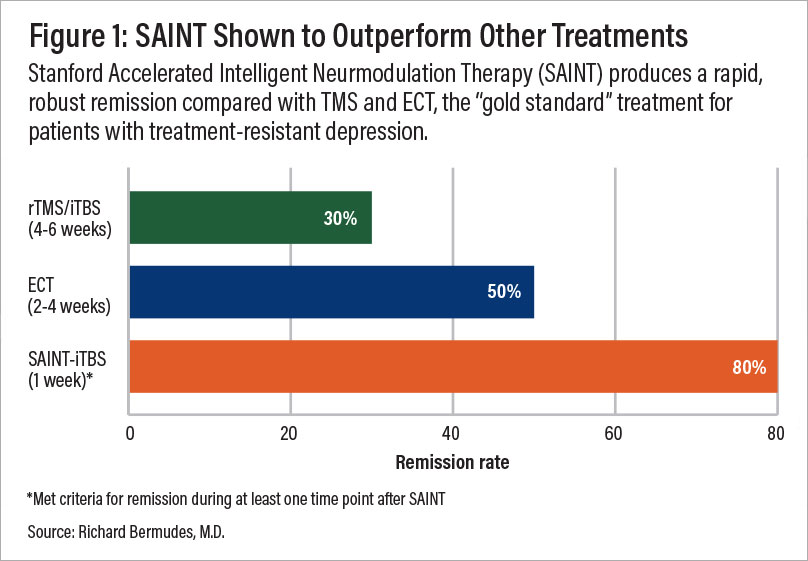
A comparison of remission rates for rTMS/iTBS, electroconvulsive therapy (ECT), and SAINT-iTBS.
fMRI-guided TMS following the SAINT™ protocol is considered the "gold standard" treatment for treatment-resistant depression, a type of depression that has not responded to multiple rounds of antidepressant medication and psychotherapy.
Clinical trials that show this method to be highly effective include:
High response rate: In a double-blind, randomized controlled trial, 85.7% of patients responded to the SAINT™ protocol. This means they met pre-defined criteria for a reduction in their depressive symptoms.
High remission rate: 78.6% of patients in the same trial met the criteria for remission, indicating a significant decrease or disappearance of depression signs and symptoms.
Rapid relief: These results were achieved in a single week of treatment, making it one of the fastest-acting depression treatment options available. A month after treatment, 60% of the trial participants were still in remission.
Note: These success rates apply specifically to the treatment of depression. Treating anxious depression is more challenging, so success rates tend to be slightly lower. However, for anxious depression, TMS remains more effective than standard antidepressant medications and has significantly fewer side effects.
fMRI-guided TMS is generally considered a safe procedure. Side effects are typically mild, short-lived, and less severe than those associated with antidepressant medications.
Common side effects: The most commonly reported side effects are headaches, scalp discomfort, and muscle twitching in the face or scalp during treatment. These usually disappear after the first few administrations.
Rare side effect: Seizures are a potential side effect of TMS but are extremely rare, occurring in less than 0.01% of sessions (less than 1 in 10,000). fMRI-guided TMS further reduces the risk of seizures by applying pulses at a lower intensity (80% of the brain's motor threshold) compared to rTMS.
Cognitive FX is one of less than ten clinics in the nation offering accelerated fMRI-guided TMS for major depression and anxious depression. Our treatment is completed in just one week. Patients receive ten TMS sessions daily for five days. Each session includes ten minutes of magnetic pulses and a 50-minute break between sessions.
To improve outcomes for our patients, we also include cognitive behavioral therapy (CBT) as a part of our treatment. When combined with the traditional method of TMS, CBT improved response and remission rates by ~8% and ~19%, respectively. Additionally, CBT is likely to produce sustained improvement over time once fMRI-guided treatment has concluded.
If you are interested in receiving fMRI-guided TMS therapy at Cognitive FX, click here to learn more.
Anxious distress in depressed outpatients: Prevalence, comorbidity, and incremental validity
The Efficacy of Cognitive Behavioral Therapy: A Review of Meta-analyses
Cognitive-Behavioral Treatments for Anxiety and Stress-Related Disorders
Stanford Neuromodulation Therapy (SNT): A Double-Blind Randomized Controlled Trial

Dr. Spangler is a Clinical Psychologist with over 20 years of experience working in both clinical and academic settings. She earned her doctorate degree in Clinical Psychology at the University of Oregon followed by a Postdoctoral Research Fellowship in the Department of Psychiatry at the Stanford University School of Medicine. Dr. Spangler served as a Professor of Psychology at Brigham Young University for 15 years where she directed training in Cognitive Behavioral Therapy for the Clinical Psychology Doctoral Program, and conducted research on the etiology and treatment of depressive, anxiety, and eating disorders. She also served as a Visiting Professor in the Department of Psychiatry Cognitive Therapy Centre at Oxford University in England. Dr Spangler has authored over 60 publications and has lectured worldwide. She has received numerous awards for her collective work from the National Institute of Mental Health, the American Psychological Association, the International Association for Cognitive Psychotherapy, the Association for Behavioral and Cognitive Therapies, the Beck Institute, and the National Association of Professional Women.

Psychotherapy helps many people with depression — but it isn’t effective for everyone. For example, a large clinical trial found that nearly 60% of participants still met the criteria for major...
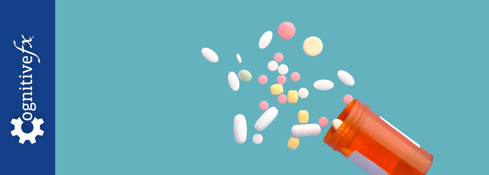
You've waited weeks. You've followed every instruction. And you still feel the same, or maybe even worse. If your antidepressant isn't working, you're not imagining things, and you're far from alone.

Many people have had experiences where dark winter days or cold weather have affected their moods. But for about 5% of adults in the U.S., getting through the winter is more than just unpleasant—it’s...
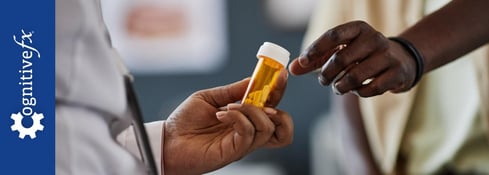
Even if an SSRI helped at first, you might find that its effects have faded—or perhaps it never worked for you at all. If you have major depressive disorder and this sounds familiar, you’re not alone.
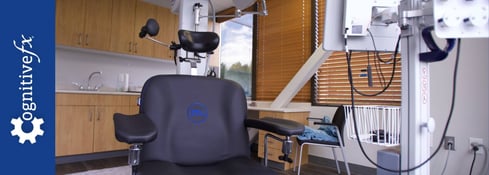
Clinics across the U.S. now offer TMS therapy specifically for anxiety. While early research suggests TMS may be an effective treatment, only a handful of studies have focused exclusively on anxiety.

To understand why your depressive symptoms aren’t going away, it’s important first to recognize that major depression is a complex disorder influenced by various factors. Effective treatment requires...